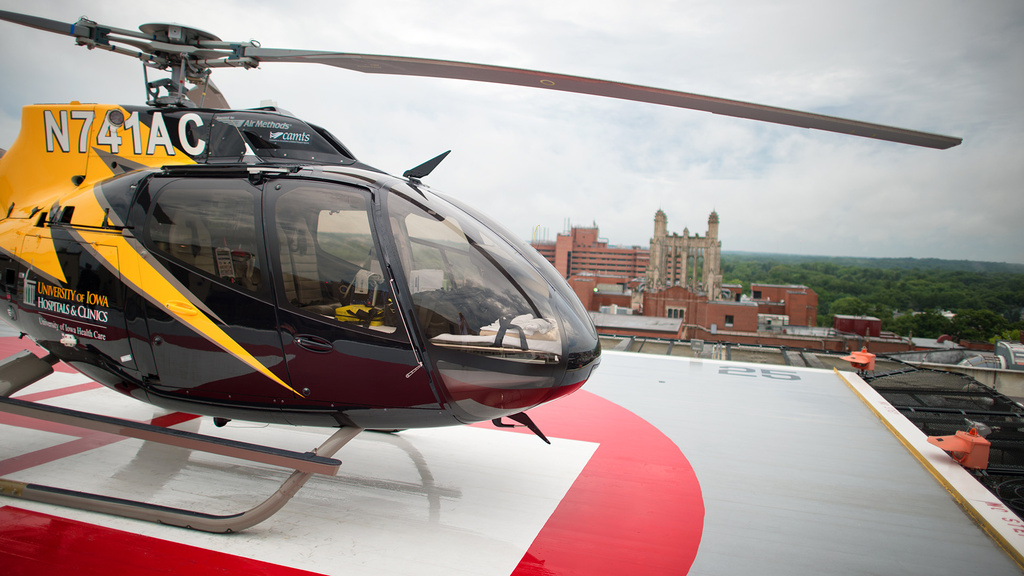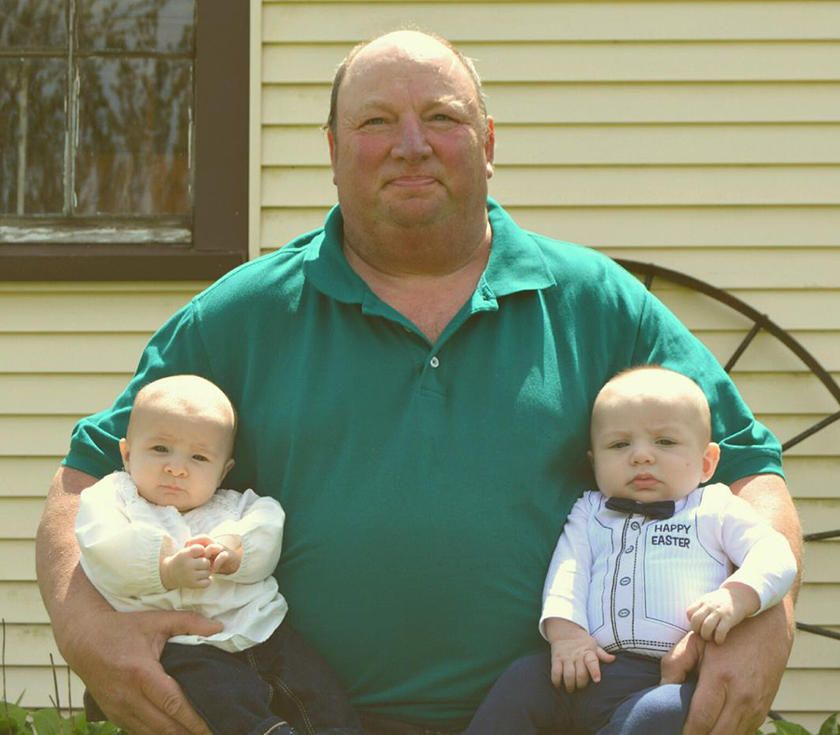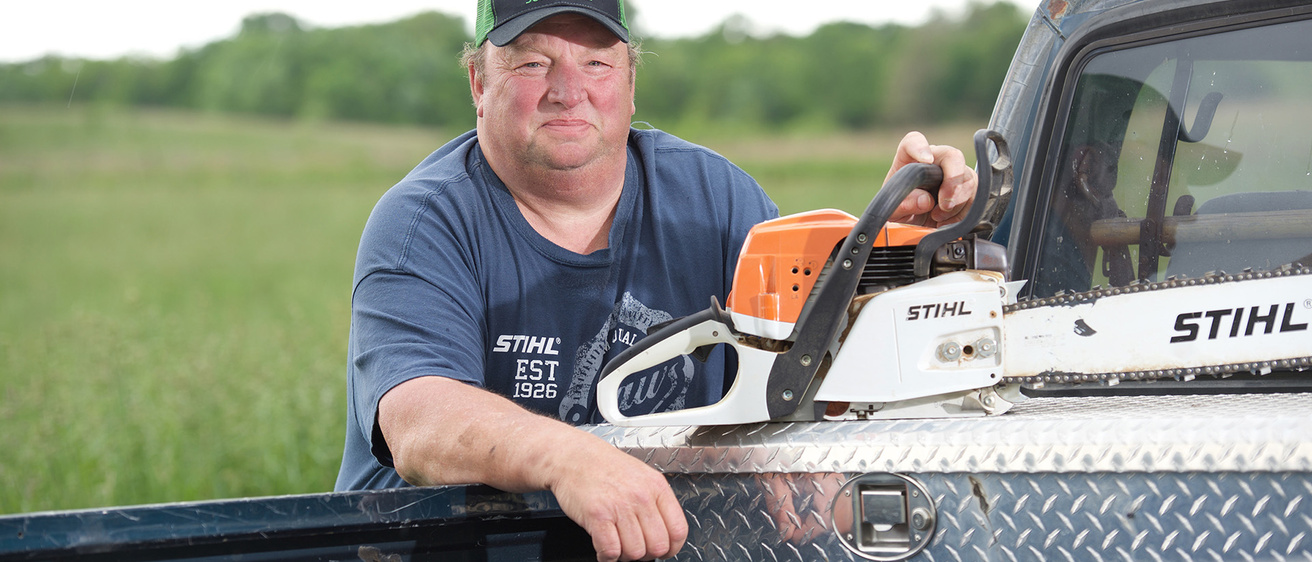Stephen Boeding partially severed his left forearm after falling while trimming a tree with his chain saw. University of Iowa medical professionals were able to treat the West Point man’s complex injuries; within months, he was holding his new grandchildren.
Story and photography: UI Health Care Marketing and Communications
Published: Dec. 17, 2019
It happened so fast: Stephen Boeding was falling toward the ground with a running chain saw in his right hand. He had fallen off a stepladder when the tree branch he was cutting came loose.
Boeding landed on the still-running blade of the chain saw, partially severing his left forearm.
He rushed to his house, where his wife called 911. Local emergency medical technicians applied a tourniquet to his arm as they waited for AirCare Emergency Transport to arrive. Boeding was flown from the front yard of his home in West Point, Iowa, to University of Iowa Health Care Medical Center.
“I was in the helicopter, and I just couldn’t believe what was happening,” Boeding says of the accident in October 2016. “Then I heard them radio to the hospital that they were transporting a ‘possible amputee.’ That really hit me.”
The injury to his arm was extensive, and Boeding lost nearly five pints of blood. Orthopedic surgeon Lindsey Caldwell, MD, led Boeding’s care.
“He’d damaged every structure on the flexor side of his arm — the inner forearm — except for one blood vessel,” Caldwell says. “The injury extended into his wrist, where it nicked a small section of bone and severed his wrist ligaments as well.”
Boeding, then 63 years old, was immediately taken into surgery.
“That night, my life was in the hands of the skilled trauma team,” Boeding says.
Boeding underwent a total of three surgeries to repair the damage caused by the chain saw. Caldwell, who specializes in hand and upper extremity issues, led the surgical team.

Critical care in the air
Stephen Boeding is one of thousands who have been treated by the AirCare team since 1979.
Caldwell reattached 11 flexor tendons in Boeding’s arm — that is, the structures that control the movement of the wrist, thumb, and fingers of his left hand—as well as the ulnar and median nerves responsible for finger motion and sensation. She also stabilized the wrist joint by reconnecting the ligaments to his wrist bone.
“As one of the only Level 1 trauma centers in the state, UI Hospitals & Clinics has the capability and expertise to perform the level of surgery necessary to treat the complex injuries Stephen sustained,” Caldwell says. “We offer hand and upper extremity replantation — the process of reattaching amputated parts — and revascularization services, re-establishing a blood supply to a partially amputated part that has lost its blood supply.”
“Dr. Caldwell and her entire team were fantastic,” Boeding says. “I can’t imagine how things might have turned out if it wasn’t for her.
“As far as I’m concerned, she’s got wings, like an angel.”
Boeding, a former union carpenter, regained most of the function of his left hand within a few months. It meant he could hold two new “grandbabies.”
“About once a week, I think about how I almost missed out on that,” Boeding says. “A lot of things went wrong that day, but a lot of things went right, too.”
Three years after his accident, Boeding says almost all of the numbness is gone. He recently helped family move furniture, and he is often working with his hands in his shop. Even after such a traumatic injury, he can hold small items, like a screw, without much difficulty.
“To get someone back to the best level of function after such a devastating injury is very satisfying to see,” Caldwell says. “I think he did a wonderful job following through with therapy, and I’m glad that I was able to be part of his care.”

Stephen Boeding holds his grandchildren in 2017, just months after partially severing his left arm. “Dr. Caldwell and her entire team were fantastic,” Boeding says. “I can’t imagine how things might have turned out if it wasn’t for her. As far as I’m concerned, she’s got wings, like an angel.”
Boeding says he knows he was very lucky that day in 2016. The “grandbabies” aren’t babies anymore, but he can still hold them.
“Dr. Caldwell asked me what my goal was, and I knew right away that I wanted to be able to hold my grandbabies,” Boeding says. “And now because of her, I can.”
